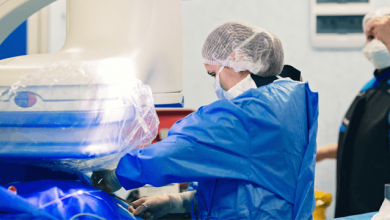Search results
Author(s):
Peter Mortier
,
Heleen MM van Beusekom
,
Matthieu De Beule
,
et al
Added:
3 years ago
Incomplete stent apposition (ISA) or stent malapposition is the lack of contact between stent struts and the underlying arterial wall. ISA has been associated with significantly higher levels of thrombus deposition1 and is typically assessed by intravascular imaging techniques such as optical coherence tomography (OCT) and intravascular ultrasound (IVUS).2–4 These imaging modalities are useful to…
View more
Author(s):
Nicolas Foin
,
Eduardo Alegria-Barrero
,
Ryo Torii
,
et al
Added:
3 years ago
Drug-eluting stents (DESs) have contributed to a significant lowering of the incidence of restenosis and target vessel revascularisation (TVR) in bifurcations.1–4 A randomised study of bifurcation lesions using sirolimus-eluting stents revealed restenosis rates of only 4 % in the main branch (MB) and a TVR rate as low as 8.2 % at six-month follow-up,2 a marked improvement over that in historical…
View more
Author(s):
Tom Adriaenssens
,
Giovanni J Ughi
,
Jan Dhooge
,
et al
Added:
3 years ago
In the bare metal stent (BMS) era, several intravascular ultrasound(IVUS) studies have validated the strategy of reducing in-stent restenosis rates by a strict adherence to an optimal stent implantation technique, predominantly by avoiding stent underexpansion.1 In a first phase after the introduction of drug-eluting stents(2003), the spectacular reduction in restenosis rates, based on…
View more
Author(s):
Viktor Kočka
,
Petr Widimsky
Added:
3 years ago
Terminology
When the first-in-human implantation of a bioresorbable device into the coronary artery was reported in 2007, the term ‘fully bioabsorbable stent’ was used.1 Later, in 2011, Onuma and colleagues explained that the term ‘bioresorbable’ provides a more precise description of the complete cleavage of macromolecules to small molecules with total elimination and the term ‘scaffold’ was…
View more
Author(s):
Luca Longobardo
,
Alessio Mattesini
,
Serafina Valente
,
et al
Added:
3 years ago
Coronary artery bifurcation lesions are treated in 15–20% of percutaneous coronary intervention (PCI) procedures and are still plagued by worse outcomes.1 This is in spite of recent significant advancements in stent technology in general and in bifurcation stenting techniques in particular. Conventional angiography provides only limited information about bifurcation anatomy, plaque distribution…
View more
Author(s):
Nienke S van Ditzhuijzen
,
Jurgen M Ligthart
,
Nico Bruining
,
et al
Added:
3 years ago
The indications for percutaneous coronary intervention (PCI) have expanded steadily during the past years. After the days of the revascularisation of obstructive coronary artery disease (CAD) by balloon angioplasty,1 the introduction of coronary stents has essentially contributed to PCI being one of the most frequently performed invasive therapeutic procedures worldwide. Bare metal stents (BMS)…
View more
Author(s):
Angela Hoye
Added:
3 years ago
The coronary tree is comprised of arteries which divide into ever smaller branches to supply the myocardium. This means that the diameter of the vessel proximal to a bifurcation is always larger than the diameter of the main vessel distal to the bifurcation. The proximal optimisation technique (POT) was proposed by Dr Olivier Darremont as a technique to compensate for this difference in diameters…
View more
Author(s):
Francesco Prati
,
Fabrizio Imola
Added:
3 years ago
Many experts would agree that the concept of looking at vessel architecture from the inside using intracoronary probes, instead of simply relying on the angiographic vessel cast, is an elegant way to practise interventional cardiology in order to decide whether to treat a coronary artery and to guide coronary intervention. The historical development of stents neatly exemplifies this notion: the…
View more
Clinical Impact of Stent Design
Author(s):
Rebecca L Noad
,
Colm Hanratty
,
Simon J Walsh
Added:
3 years ago
Article
Platinum Chromium Stent Series
Author(s):
Dominic J Allocco
,
Mary V Jacoski
,
Barbara Huibregtse
,
et al
Added:
3 years ago
Article











